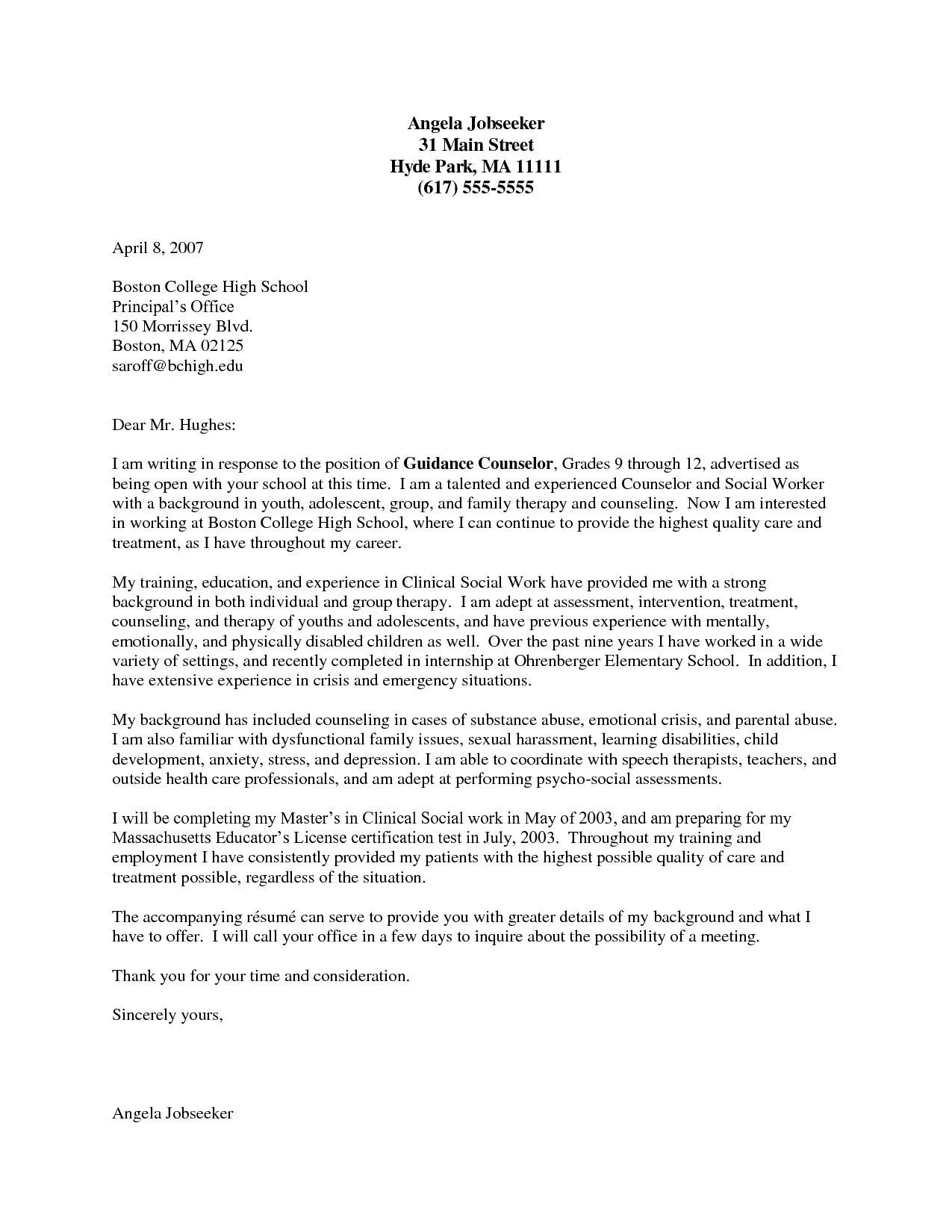Understanding the Importance of a Therapist Cover Letter
A therapist cover letter is more than just a formality; it’s your first opportunity to make a strong impression on a potential employer. It serves as a crucial introduction, allowing you to showcase your personality, skills, and experience in a way that a resume alone cannot. This guide will walk you through the essential components of crafting a compelling cover letter that highlights your qualifications and increases your chances of landing your dream job. Understanding the significance of a well-written cover letter is the first step toward career success in the mental health field. It’s your chance to connect with the hiring manager and demonstrate why you’re the ideal candidate. It is crucial to take the time and write a well-crafted cover letter.
What is a Therapist Cover Letter?
A therapist cover letter is a document accompanying your resume when applying for a therapist position. It’s a personalized letter that introduces you to the hiring manager, providing context to your application. Unlike a resume, which presents a factual overview of your skills and experience, a cover letter allows you to elaborate on your qualifications, express your enthusiasm for the role, and explain why you are a good fit for the organization. A well-written cover letter should showcase your passion for helping others and your understanding of the specific needs of the role you are applying for. It serves as your voice in your absence and presents your goals and experience.
Why is a Cover Letter Important for Therapists?
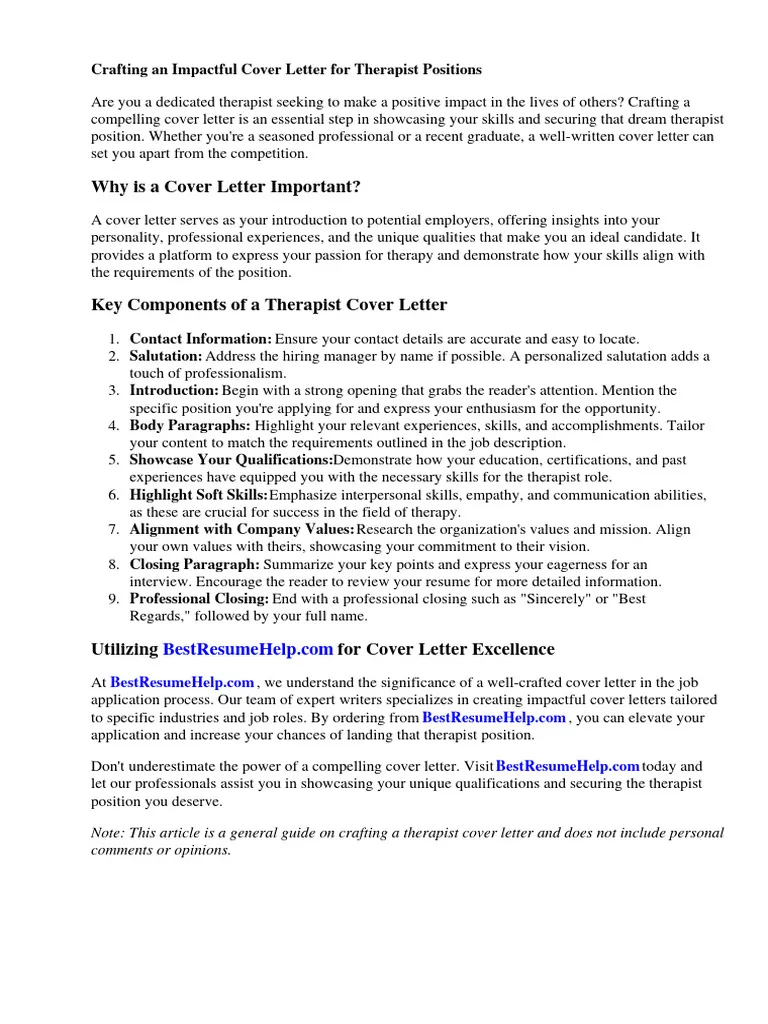
For therapists, a cover letter is particularly important. It’s an opportunity to demonstrate your empathy, communication skills, and understanding of the therapeutic process. It allows you to go beyond a list of qualifications and highlight your ability to connect with others. A cover letter provides a platform to share your therapeutic approach and philosophy, which is essential for potential employers to assess whether your values align with their organization’s mission. A compelling cover letter can set you apart from other candidates, showcasing your unique strengths and personality. This will increase your chances of getting an interview.
Key Components of a Compelling Therapist Cover Letter
A strong therapist cover letter comprises several key elements. Each component plays a role in presenting a complete picture of your qualifications and suitability for the position. These components, when carefully crafted, work together to create a persuasive document that captures the attention of the hiring manager. This ensures your application stands out from the competition. The following sections detail each component and provide guidance on how to include them effectively in your cover letter. It’s important to make sure you have these in your cover letter to make it better.
Header and Contact Information
Your header should include your full name, address, phone number, and email address. Ensure this information is easy to read and up-to-date. It is best practice to use a professional-looking email address and include the date of the letter. Always make sure the information is correct so the employers can contact you back.
Personalized Greeting
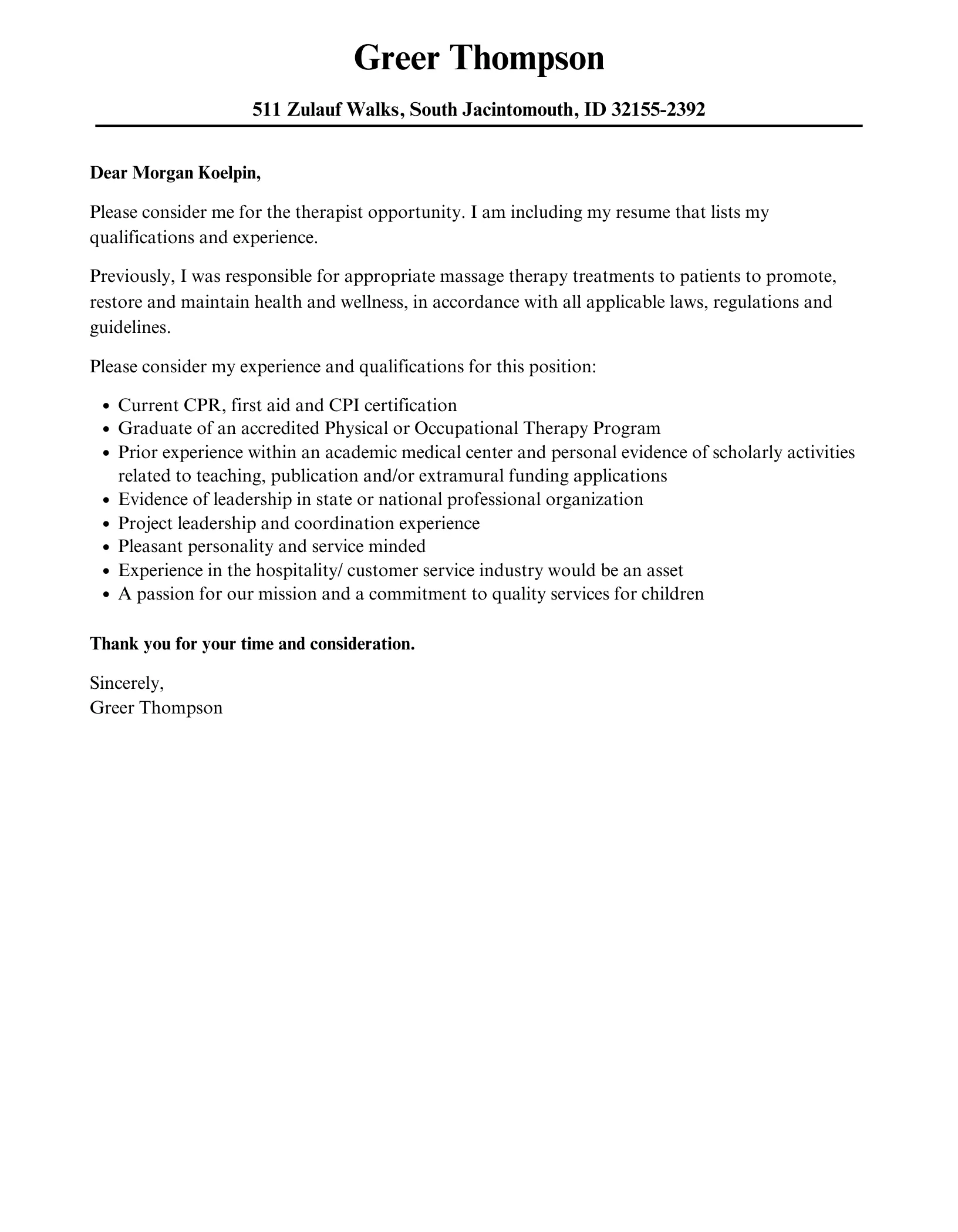
Address the hiring manager by name whenever possible. Researching the name of the hiring manager or the person who will be reviewing applications can make your cover letter stand out. If you cannot find a specific name, a general greeting such as “Dear Hiring Committee” is acceptable but less personal. It shows you’re taking the time to build a connection. If the name is not available, ensure to use a formal greeting.
Opening Paragraph: Grabbing Their Attention
Your opening paragraph should immediately capture the reader’s attention. Briefly state the position you are applying for and where you saw the advertisement. Then, include a sentence or two that highlights your key qualifications or expresses your enthusiasm for the role or the organization. This is your chance to make a strong first impression. It should be concise and highlight the most relevant skills for the role. The goal is to encourage the hiring manager to keep reading.
Highlighting Your Qualifications and Skills
In the main body of your letter, elaborate on your qualifications and skills. Tailor this section to match the job description. Mention specific skills, experiences, or certifications that align with the requirements of the position. Support your claims with examples from your past experiences, such as successful case studies or specific therapeutic approaches you’ve used. This section is where you translate your resume into a narrative that demonstrates your competence. Use clear and concise language and avoid jargon that might confuse the reader. Backing up your skills with evidence is crucial.
Showcasing Relevant Experience

Provide detailed examples of your relevant experience. Describe your previous roles and responsibilities, highlighting your achievements and contributions. Quantify your accomplishments whenever possible by using numbers. For example, mention the number of clients you’ve worked with, the percentage of improvement in clients’ outcomes, or any programs you’ve developed. Emphasize how your past experiences have prepared you for the role you are applying for. Clearly connect your experience to the needs of the employer. Use action verbs and avoid simply listing your duties; show what you did and the impact you made. This section is about displaying your experience.
Emphasizing Your Therapeutic Approach
As a therapist, your therapeutic approach is a crucial aspect of your practice. Describe your preferred therapeutic modalities, such as Cognitive Behavioral Therapy (CBT), Psychodynamic Therapy, or person-centered therapy. Explain why you are drawn to these approaches and how they inform your work with clients. Briefly discuss your philosophy of care and how you build relationships with clients. Mention any specializations, such as working with specific populations or addressing particular issues. This section is crucial to demonstrate your approach to the role.
Demonstrating Your Understanding of the Role and Organization
Show that you understand the specific requirements of the role and the mission of the organization. Research the organization beforehand and mention any aspects of their work that resonate with you. Explain how your skills and experience align with their values and goals. Demonstrate your knowledge of the challenges and opportunities the organization faces. Showing you understand the organization and the position makes you look interested in the role. This can increase your chances of getting hired.
Expressing Enthusiasm and Passion
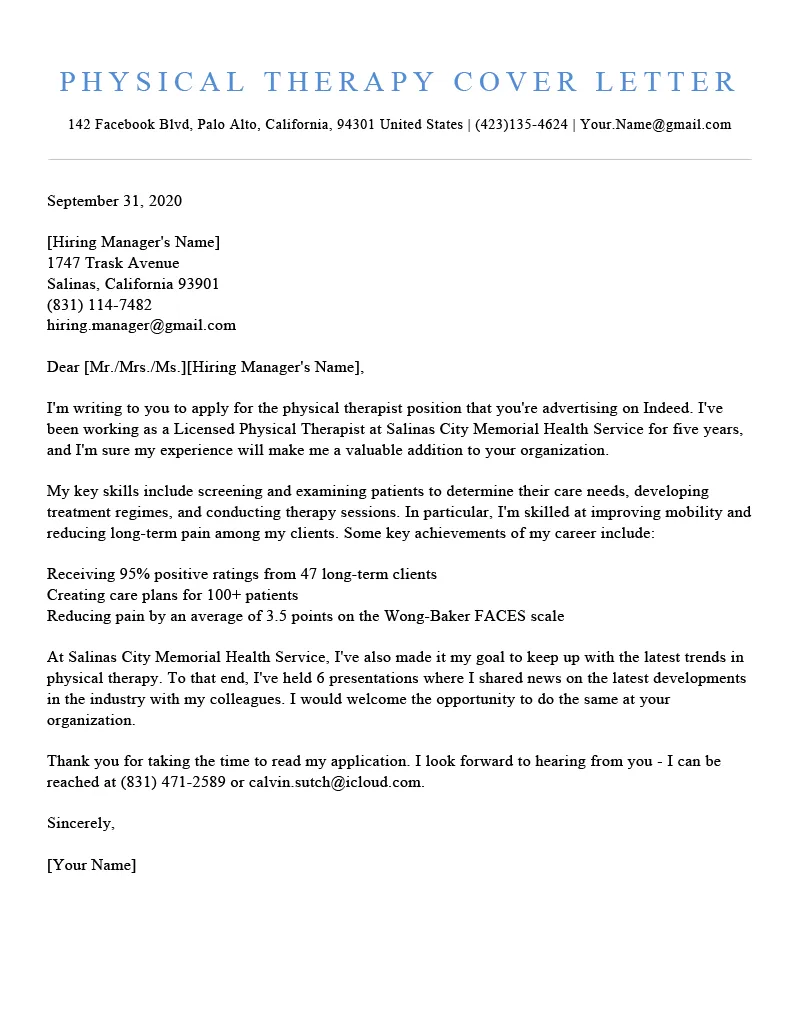
Throughout your cover letter, express your enthusiasm for the role and your passion for helping others. Use words and phrases that convey excitement and commitment. Describe what motivates you to work as a therapist and why you are interested in this particular opportunity. Let your personality shine through to connect with the reader on a personal level. Show you are passionate about what you do. The best way to do this is by showing your personality. Showing you have passion is a great way to impress the hiring manager.
Closing the Letter and Call to Action
Your closing paragraph should summarize your key qualifications and reiterate your interest in the position. Express your eagerness to learn more about the role and the organization. Include a clear call to action, such as requesting an interview or offering to provide additional information. Thank the hiring manager for their time and consideration. The call to action is crucial, as it is what the hiring manager should do once reading your letter.
Formal Closing and Signature
Use a professional closing such as “Sincerely,” or “Best regards.” Leave space for your signature if printing the letter. If submitting electronically, you can type your full name beneath the closing. Always make sure to include your contact information below your name. Make sure your closing is professional and appropriate for the context.
Requesting an Interview
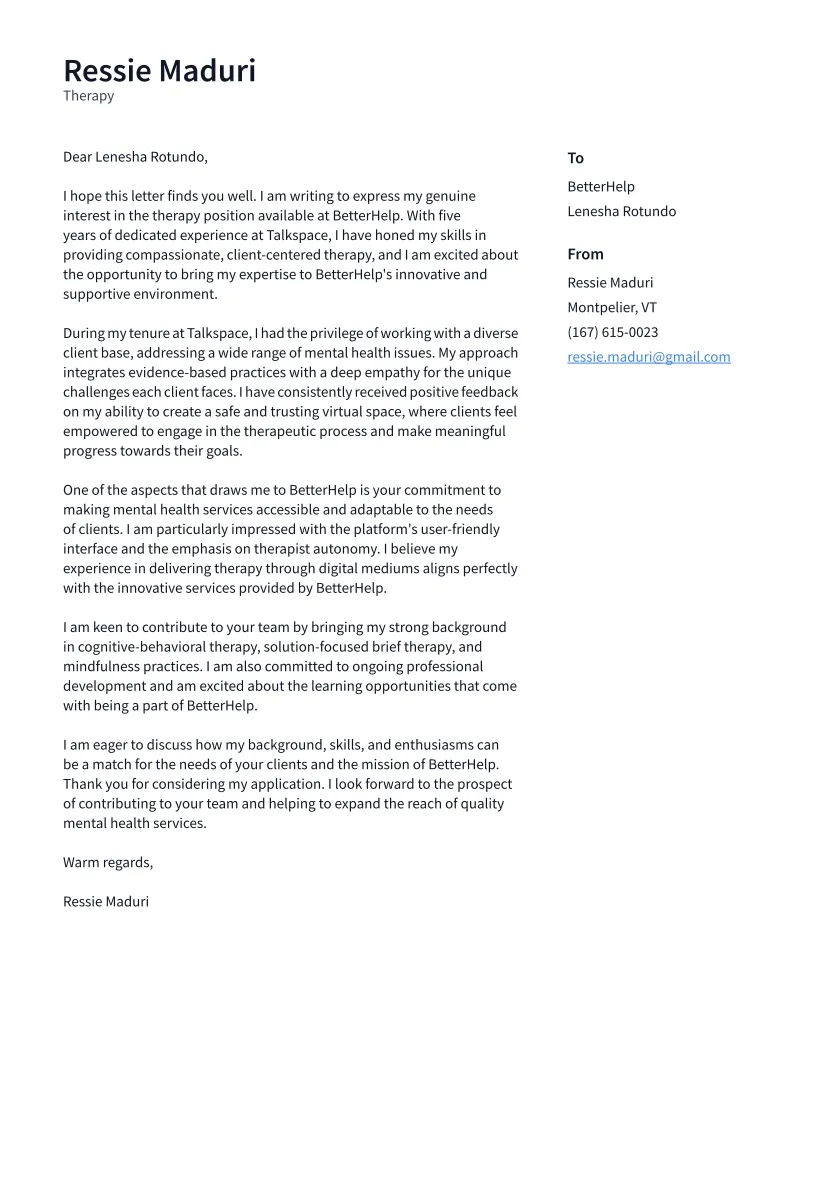
Explicitly state your interest in an interview. Mention your availability and express your willingness to discuss your qualifications further. Make it easy for the hiring manager to take the next step by providing clear instructions on how to contact you. Your request for an interview is a key element of your closing. Always make sure to have your contact information in the header of your cover letter to make sure the employer can reach you.
Formatting and Proofreading Your Cover Letter
Proper formatting and meticulous proofreading are essential for presenting a professional image. A well-formatted and error-free cover letter demonstrates attention to detail, a crucial quality for any therapist. Taking the time to format and proofread your cover letter shows that you care about the impression you make. It reflects well on your professionalism. The following sections provide practical advice on formatting and proofreading your cover letter effectively.
Formatting Tips for Readability
Use a standard font such as Times New Roman, Arial, or Calibri. Keep the font size between 11 and 12 points for easy reading. Use single spacing for the body of the letter and add a space between paragraphs. Use left alignment and avoid full justification. Keep the margins at a standard size, typically one inch on all sides. Use clear and concise language. These formatting tips help to maintain professionalism and ensure your cover letter is easy to read. Proper formatting is a great way to show the employer that you care about your letter.
Proofreading for Errors
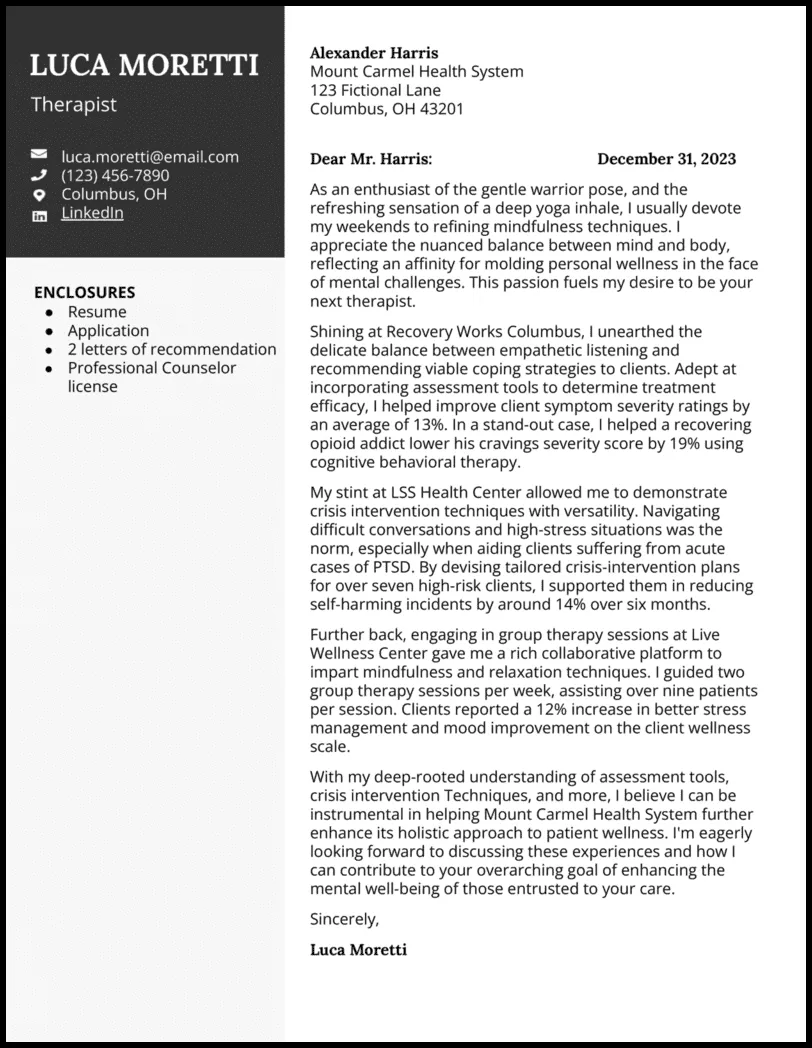
Thoroughly proofread your cover letter for any spelling, grammar, or punctuation errors. Use spell-check and grammar-check tools. However, do not solely rely on these tools. Read your letter aloud to catch any awkward phrasing or mistakes. Ask a friend or colleague to review your letter as a fresh pair of eyes can often spot errors you may have missed. Ensure all your information is correct and up to date. A clean cover letter is an important part of the application process.
Examples of Effective Therapist Cover Letters
Reviewing examples of successful cover letters can help you get a better idea of how to structure your own. These examples can serve as inspiration and help you tailor your letter to different types of therapist positions. By studying well-written examples, you can learn what makes a cover letter effective and how to avoid common pitfalls. The following are examples to help guide you through the process.
Example 1: For a Clinical Therapist Position
This example might highlight experience in providing individual and group therapy, experience with a particular population, and proficiency in evidence-based therapeutic approaches. It would also showcase knowledge of ethical guidelines and documentation practices. The cover letter should clearly state why you are the right fit for the role. This example might include experiences like conducting clinical assessments and developing treatment plans.
Example 2: For a School Counselor Role
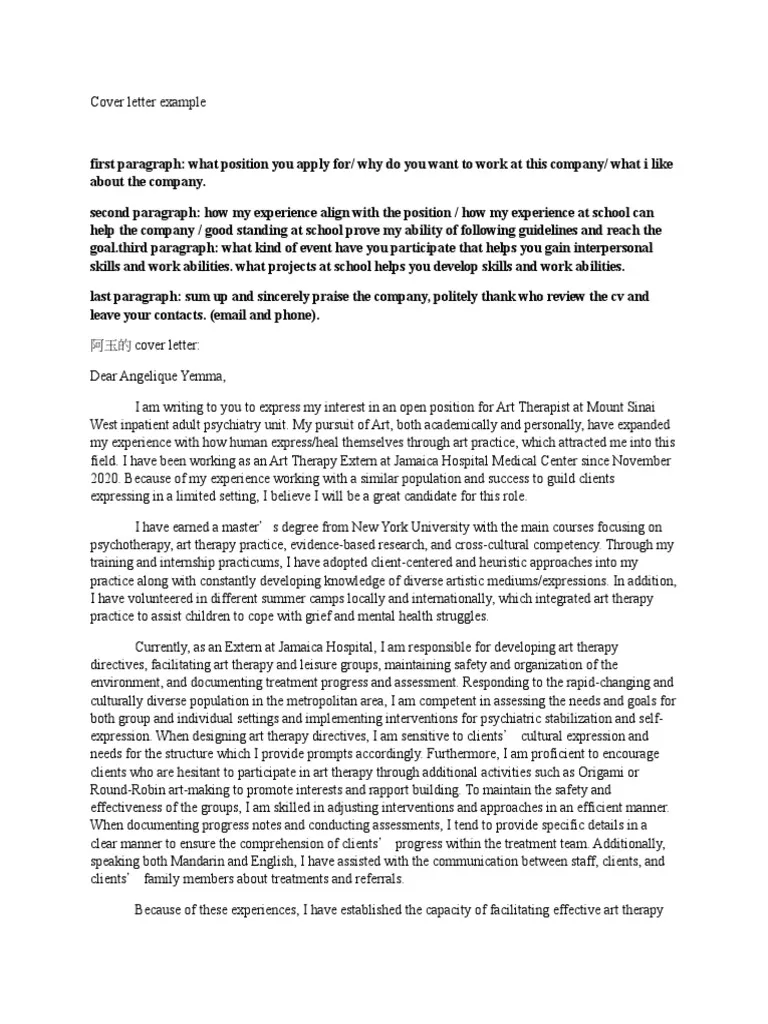
This example might focus on experience working with children and adolescents, understanding of school-based counseling programs, and knowledge of child development. The cover letter would demonstrate familiarity with school policies and procedures. It should show your ability to provide support to students. This can include experiences like creating and implementing a social-emotional learning curriculum.
Example 3: For a Private Practice Application
This example might emphasize your ability to build a private practice. It could highlight your experience in marketing your services, building a client base, and managing administrative tasks. The cover letter will showcase your independence and your understanding of the business side of therapy. This can include experiences like developing a marketing strategy and managing client billing.
Common Mistakes to Avoid in Your Cover Letter
Avoiding common mistakes can significantly increase the effectiveness of your cover letter. Being aware of these pitfalls can help you refine your application. These include both content and presentation errors that can detract from your qualifications and make a negative impression on the hiring manager. Here is a list of common mistakes to avoid.
Generic Content and Lack of Personalization
Avoid using a generic template or a cover letter that is not tailored to the specific job or organization. Always customize your letter to the specific position and address it to the hiring manager by name. Demonstrate that you have taken the time to understand the role and the organization. Generic letters lack the personal touch that convinces the reader you are invested. Always make sure the cover letter is unique.
Typos and Grammatical Errors
Typos and grammatical errors can undermine your credibility. Always proofread your cover letter carefully before submitting it. Use spell-check and grammar-check tools. But don’t rely on them entirely. Ask someone else to review your letter. Errors can show a lack of attention to detail and can make the hiring manager question your professionalism. A clean and error-free cover letter is a sign of professionalism. It shows you care about your application.
Focusing Solely on Responsibilities
While it’s important to list your responsibilities, focus more on what you achieved in those roles. Quantify your accomplishments whenever possible. Describe the impact you made in your previous positions. Highlighting your achievements demonstrates your skills and experience. Show the results you achieved in past roles. This is more persuasive than a list of job duties.
Tailoring Your Cover Letter to Each Application
Customizing your cover letter for each job application is crucial for success. Tailoring your letter demonstrates your genuine interest in the specific opportunity and increases your chances of getting an interview. This will help you better showcase the skills the employer is looking for. It also indicates that you are willing to put in the extra effort to make a connection with the hiring manager. Customize each cover letter to better show your unique skills and personality.
Researching the Organization and Role
Before you write your cover letter, research the organization and the specific role. Visit their website and learn about their mission, values, and the services they provide. Understand the requirements of the position by carefully reading the job description. The more you know about the employer and the role, the better you can tailor your letter to their needs. Show you are interested in the role by researching it.
Customizing Your Letter to the Job Description
Carefully review the job description and identify the key requirements and qualifications. Then, use your cover letter to highlight the skills and experiences that align with these requirements. Tailor your language and examples to demonstrate how you meet the specific needs of the position. Make sure the language in your cover letter aligns with the role. This makes the hiring manager take you seriously. This is a great way to improve your chances of being hired.
Using Keywords from the Job Posting
Use keywords and phrases from the job posting in your cover letter. This helps your application get noticed by applicant tracking systems (ATS) that scan resumes and cover letters for relevant keywords. Incorporate these keywords naturally within your sentences and paragraphs. Avoid keyword stuffing. This will make sure that your cover letter aligns with the job posting and requirements. Make sure you have the right keywords to improve the chance of being hired.
Final Thoughts and Next Steps
Writing a compelling cover letter is a vital step in your job search. By following the guidelines outlined in this guide, you can craft a cover letter that effectively showcases your qualifications, experience, and passion for the field. Remember to always tailor your cover letter to each specific job application. Proofread your letter meticulously before submitting it. This will give you the best chance of landing your dream job. It will also help you make a great impression.
Once you’ve created your cover letter, the next step is to prepare for the interview. Research the organization, review common interview questions, and practice your responses. Present yourself professionally and confidently. Good luck on your job search. Remember to highlight your strengths, passion, and unique qualities as a therapist to stand out from the crowd. Make sure you can clearly convey why you are an asset to the organization.
